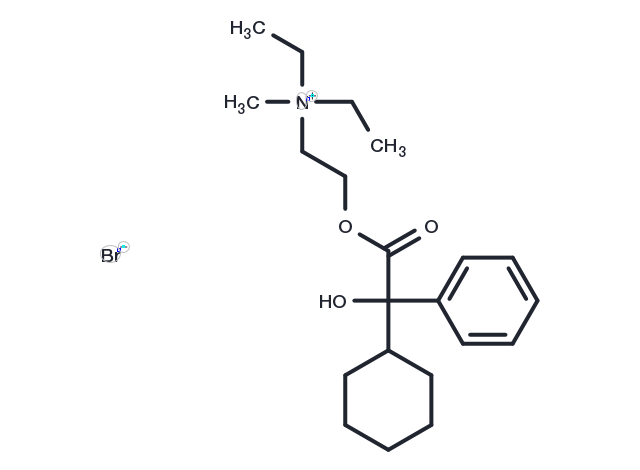Powder: -20°C for 3 years | In solvent: -80°C for 1 year


Oxyphenonium bromide (Oxyfenon) shows anticholinergic activity and can be used for research on the treatment of gastric and duodenal ulcers and for the relief of visceral spasms.

| Pack Size | Availability | Price/USD | Quantity |
|---|---|---|---|
| 10 mg | In stock | $ 39.00 | |
| 25 mg | In stock | $ 62.00 | |
| 50 mg | In stock | $ 91.00 | |
| 100 mg | In stock | $ 133.00 | |
| 1 mL * 10 mM (in DMSO) | In stock | $ 39.00 |

| Description | Oxyphenonium bromide (Oxyfenon) shows anticholinergic activity and can be used for research on the treatment of gastric and duodenal ulcers and for the relief of visceral spasms. |
| Synonyms | Spasmophen, Oxifenon, Oxyfenon, Atrenyl, Oxyphenon |
| Molecular Weight | 428.404 |
| Formula | C21H34BrNO3 |
| CAS No. | 50-10-2 |
Powder: -20°C for 3 years | In solvent: -80°C for 1 year
DMSO: 27.5 mg/mL (64.19 mM)
You can also refer to dose conversion for different animals. More
bottom
Please see Inhibitor Handling Instructions for more frequently ask questions. Topics include: how to prepare stock solutions, how to store products, and cautions on cell-based assays & animal experiments, etc.
Oxyphenonium bromide 50-10-2 Others Spasmophen Oxifenon Oxyphenonium Bromide Oxyfenon Atrenyl Oxyphenon inhibitor inhibit
